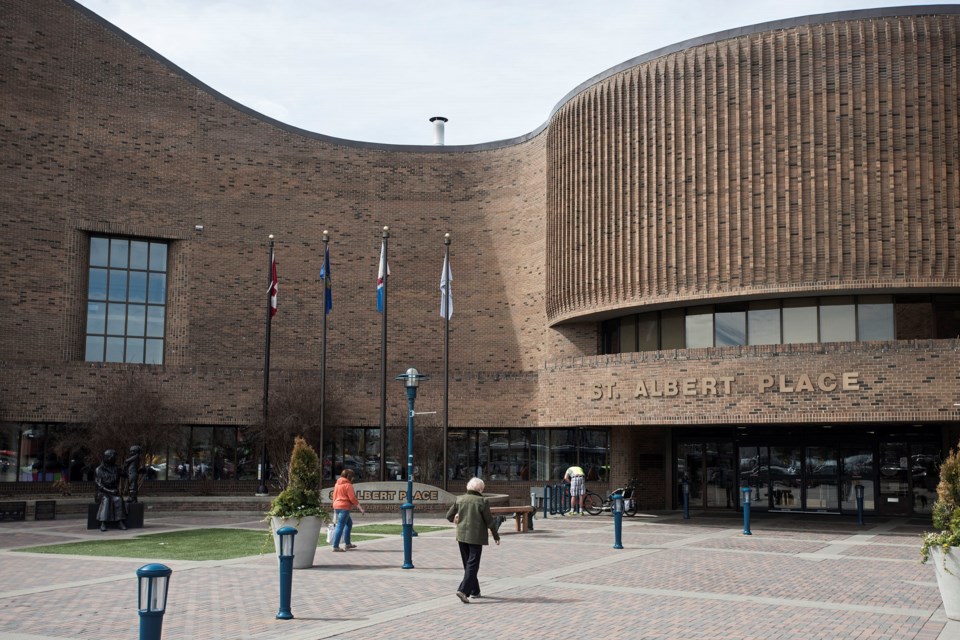After hearing administration project a 7.2-per-cent tax increase for 2023, St. Albert city council has directed staff to formulate options to bring the increase within the range of three to five per cent.
During council on May 2, administration presented projections of the City’s municipal operating budget in the years 2023 to 2025. According to the overview, around 86 per cent of the City’s budget goes to maintaining services. The City estimates that keeping current service levels as they are will result in an annual tax increase of 7.2 per cent in 2023; 6.2 per cent in 2024; and 3.9 per cent in 2025.
Suzanne Findlay, St. Albert’s interim manager of financial services, noted St. Albert has a high residential tax ratio, with only 20 per cent of the tax base composed of non-residential tax assessment. Growing the latter half of the tax base will take time, Findlay said, adding that the City needs to consider long-term actions such as adjusting service levels in the interim.
In 2022, the City took measures to offset the tax increase by using $3 million in reserve and COVID-19 relief funding.
“We have exhausted all short-term actions to reduce the tax impact,” Findlay said.
Findlay noted the forecasted tax increases don’t include any new business cases that might be required as a result of future council decisions, or debt servicing or operational impacts associated with capital plans that have not yet been approved. Findlay said this is why the projected tax increase in 2025 appears reduced.
“The decisions made in 2023 and 2024 will impact the 2025 tax increase,” Findlay said.
Conservative inflation projections
In its budget projections, the City factored in three per cent annual inflation on contracted and general services, utilities, materials, and supplies.
Coun. Mike Killick noted the three per cent figure seemed low.
“How comfortable do we feel that that three per cent is going to materialize?” Killick asked.
Kerry Hilts, interim CAO for St. Albert, said City administration arriving at the figure “was not an easy determination.”
“Realistically it could be four, it could be five, given what’s been happening worldwide right now,” Hilts said. “We decided to come in at three per cent given more of a historical perspective, but it was not an easy determination.”
The projections also factor in two-per-cent assessment growth (additional taxes generated by new properties), which is also a conservative figure, Diane McMordie, St. Albert’s director of finance, said in response to a question from Coun. Wes Brodhead.
Approved RMR costs buoying increases: councillor
Coun. Sheena Hughes argued the City is feeling the effects of the previously approved 1.5-per-cent increase each year designed to cover an underfunded repair, maintenance, and replacement (RMR) budget.
“As I’ve said before, that 1.5 was too aggressive,” Hughes said, noting the City is now in the midst of dealing with the compounded costs of COVID-19 recovery and inflation rates. “The question we need to ask ourselves is how far do we want to push the RMR?”
Later in the meeting, Coun. Natalie Joly said she is “proud” of St. Albert’s RMR planning, which she described as a decision “not to kick the can down the road.”
Council eyes tax-increase scenarios in the three- to five-per-cent range
Administration asked council to provide guidance on what an acceptable tax-increase range would be.
Staff will prepare different scenarios for council to choose from come budget deliberations in the fall.
Coun. Ken MacKay put forward a motion directing administration to aim for options within a three- to five-per-cent window.
“This is not only our challenge, it’s going to be an ongoing challenge for many municipalities across Alberta,” MacKay said. “The challenge is for us is to continue to engage with the community and really figure out some of our core services — what we need to do versus what would be nice to have.”
Coun. Shelley Biermanski said she would like to see administration come forward with a two-per-cent a tax increase.
“Administration should be looking under every single rock,” Biermanski said. “I think we have to keep it down at the normal tax increase that we’ve seen to keep the sanity of the population right now.”
Mayor Cathy Heron ultimately voted in support of MacKay’s motion, initially telling council she would be all right with options in the four- to five-per-cent range.
Heron added that she feels tax increases in the past have been too low.
“I don’t want to see this pushed to the next council,” Heron said. “When you don’t fund the City appropriately you’ve got problems, and RMR is a perfect example.”
She added that the City has spent “enough time looking under rocks,” and will need to find long-term solutions, as well as wean itself off of pots of money, such as the City’s stabilization reserve, which reached formerly unseen low levels in 2021.
The motion directing administration to come forward with tax-increase scenarios in the range of three to five per cent passed 6-1, with Biermanski opposed.




